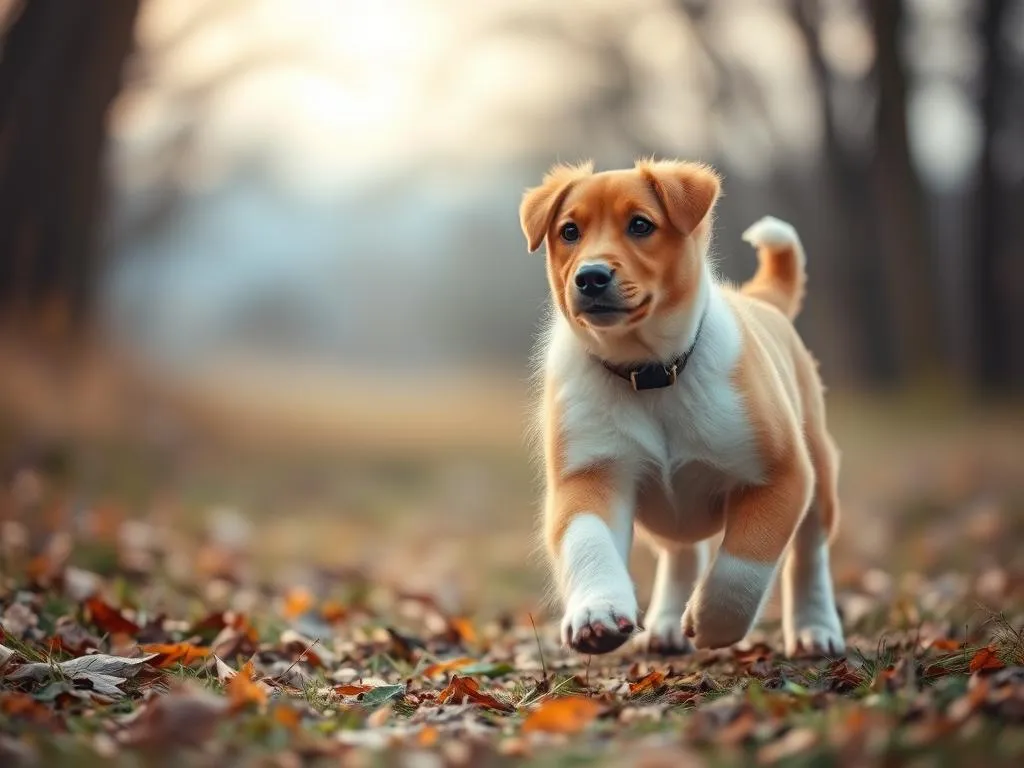
Understanding when you can start running with your puppy is crucial for their health and overall safety. Proper exercise not only helps maintain a healthy weight but also contributes to mental stimulation and bonding between you and your furry friend. However, starting too early or pushing a puppy too hard can lead to serious health issues. This article will delve into the factors that influence when it’s appropriate to start running with your puppy, including age, breed, physical development, and health status.
Understanding Puppy Development
Growth Stages of Puppies
Puppies go through several growth stages, each with unique developmental milestones:
-
Neonatal Stage (0-2 weeks): At this stage, puppies are entirely dependent on their mother. They cannot regulate their body temperature and rely on their mother for nutrition and warmth.
-
Transitional Stage (2-4 weeks): Puppies begin to open their eyes and ears and start to move around. They start to explore their environment but are still not ready for exercise.
-
Socialization Stage (4-12 weeks): This is a critical period for socialization. Puppies learn about their environment and develop their social skills. However, their bodies are still maturing.
-
Juvenile Stage (3-6 months): Puppies become more active and playful, but their bones and joints are still growing. High-impact activities should be avoided.
-
Adolescence (6-18 months): This stage can be challenging as puppies test boundaries. They are more physically capable but still need guidance regarding exercise.
Physical Development
Puppies’ bone growth and maturity are crucial factors to consider before starting a running routine. Puppies have soft, pliable bones that are still developing. Running on hard surfaces can lead to injuries, including joint issues and fractures, if done too early.
Muscle development is another important aspect. Puppies need to build muscle gradually, just like humans do. Starting with short walks and gradually increasing intensity is essential to ensure they develop strength without risking injury.
Factors Influencing Exercise Readiness
Certain factors can influence when a puppy is ready for running:
-
Breed-Specific Considerations: There are significant differences in exercise requirements and readiness based on breed size. Larger breeds generally take longer to mature than smaller breeds.
-
Individual Health Factors: Each puppy is unique, and any previous injuries or existing health conditions must be considered before starting an exercise regimen.
The Right Age to Start Running
General Guidelines
Veterinarians generally recommend waiting until puppies are 12-18 months old before starting a running routine. This timeframe allows for adequate bone and muscle development, reducing the risk of injuries.
Signs of Readiness
To assess if your puppy is physically prepared for running, look for these signs:
-
Energy Levels: If your puppy often has bursts of energy and seems eager to play, they might be ready for more intense activities.
-
Interest in Running: If your puppy shows interest in running alongside you or chasing after objects, it’s a good indicator of readiness.
-
Basic Training: If your puppy has mastered basic commands and can follow your lead, they are more likely to be ready for running.
Breed Considerations
-
Large Breeds: Breeds like Great Danes, Mastiffs, and St. Bernards may require waiting until they are closer to 18 months due to their larger skeletal structure and growth patterns.
-
Small Breeds: Smaller breeds, such as Chihuahuas or Dachshunds, may be ready for light jogging sooner, often around 12 months, as their growth plates close earlier.
Consultation with a Veterinarian
Before starting any running program, it’s vital to consult with your veterinarian. They can provide tailored advice based on your puppy’s specific health needs and physical condition. This step is especially important if your puppy has any potential health concerns.
Preparing Your Puppy for Running
Basic Training and Commands
Before hitting the pavement, ensure your puppy is well-trained in basic commands. Essential commands include:
- Sit: Helps to manage your puppy’s behavior.
- Stay: Keeps them in place while you prepare to run.
- Heel: Teaches them to run beside you instead of pulling on the leash.
- Recall: Ensures your puppy can come back to you if they stray.
Leash Training
Introducing a leash is one of the first steps in preparing your puppy for running. Start by allowing your puppy to wear the leash indoors. Gradually increase the duration and practice walking around the house. Once they are comfortable, take short walks outside to acclimatize them to the environment.
Building Stamina Gradually
Starting slow is crucial. Begin with short walks and gradually increase the distance. For example:
- Week 1: 10-minute walk
- Week 2: 15-minute walk
- Week 3: 20-minute walk
As your puppy builds stamina, you can slowly incorporate short bursts of running into your routine.
Choosing the Right Gear
-
Collars and Harnesses: Select an appropriately sized collar or harness that provides comfort and security. A harness is often better for puppies that pull, as it distributes pressure more evenly.
-
Footwear: Though not always necessary, dog booties can protect your puppy’s paws from harsh surfaces. This is especially important during extreme weather conditions.
Health and Safety Tips While Running
Hydration and Nutrition
Keeping your puppy hydrated is essential during exercise. Always have fresh water available before and after your run.
-
Pre-Run Nutrition: Feed your puppy a light meal a few hours before running to avoid stomach issues.
-
Post-Run Nutrition: After your run, allow your puppy to cool down before offering their regular meal.
Monitoring for Signs of Fatigue or Distress
While running, keep a close eye on your puppy. Recognizing signs of fatigue or distress is vital. Some common signs include:
- Excessive panting
- Slowing down or stopping
- Laying down
- Limping or favoring one leg
If you notice any of these signs, it’s essential to stop and allow your puppy to rest.
When to Stop
The duration of your run should depend on your puppy’s age and breed. A general guideline is:
- Under 6 months: Limit runs to short distances (5-10 minutes).
- 6-12 months: Gradually increase to 20-30 minutes.
- Over 12 months: Depending on breed, aim for 30-60 minutes, but always listen to your puppy’s cues.
Seasonal Considerations
-
Running in Heat: Be cautious of overheating. Avoid running during the hottest parts of the day and look for shady paths. If your puppy shows signs of distress, take breaks in a cool area.
-
Winter Running: Cold weather can be just as challenging. Protect your puppy’s paws from ice and snow by using booties or checking their paws for injury after a run.
Alternatives to Running
Other Forms of Exercise
If your puppy isn’t quite ready for running, there are plenty of alternatives to keep them active:
-
Walking: Regular walks provide excellent exercise and mental stimulation.
-
Playtime: Engage in interactive play with toys, fetch, or tug-of-war to help your puppy burn off energy.
-
Swimming: Swimming is a low-impact exercise that can be great for joint health. Always supervise your puppy around water.
Mental Stimulation
Mental engagement is just as crucial as physical exercise. Incorporate puzzle toys and games that challenge your puppy’s mind. Training sessions can also serve as a form of exercise, providing both mental and physical stimulation.
Conclusion
In summary, understanding when you can start running with your puppy is essential for their health and development. By waiting until they are physically mature, typically around 12-18 months, and preparing them properly, you can ensure a safe and enjoyable experience.
Balanced exercise contributes significantly to your puppy’s overall health and well-being. Remember to consult with your veterinarian, observe your puppy’s readiness, and take gradual steps toward building a running routine. Enjoy the journey of raising a healthy, active dog!
FAQs
How far can I run with my puppy?
Puppies should start with short distances, gradually increasing as they build stamina. A good rule of thumb is to limit runs based on their age and breed.
What are the best running practices for puppies?
Start slow, monitor for signs of fatigue, and ensure proper hydration before and after running sessions.
How often should I run with my puppy?
Aim for a few times a week, adjusting frequency based on your puppy’s fitness level and needs.
Can I run with my puppy on the beach or trails?
Yes, but ensure the surfaces are safe and comfortable for your puppy’s paws, and watch for signs of fatigue or distress.









